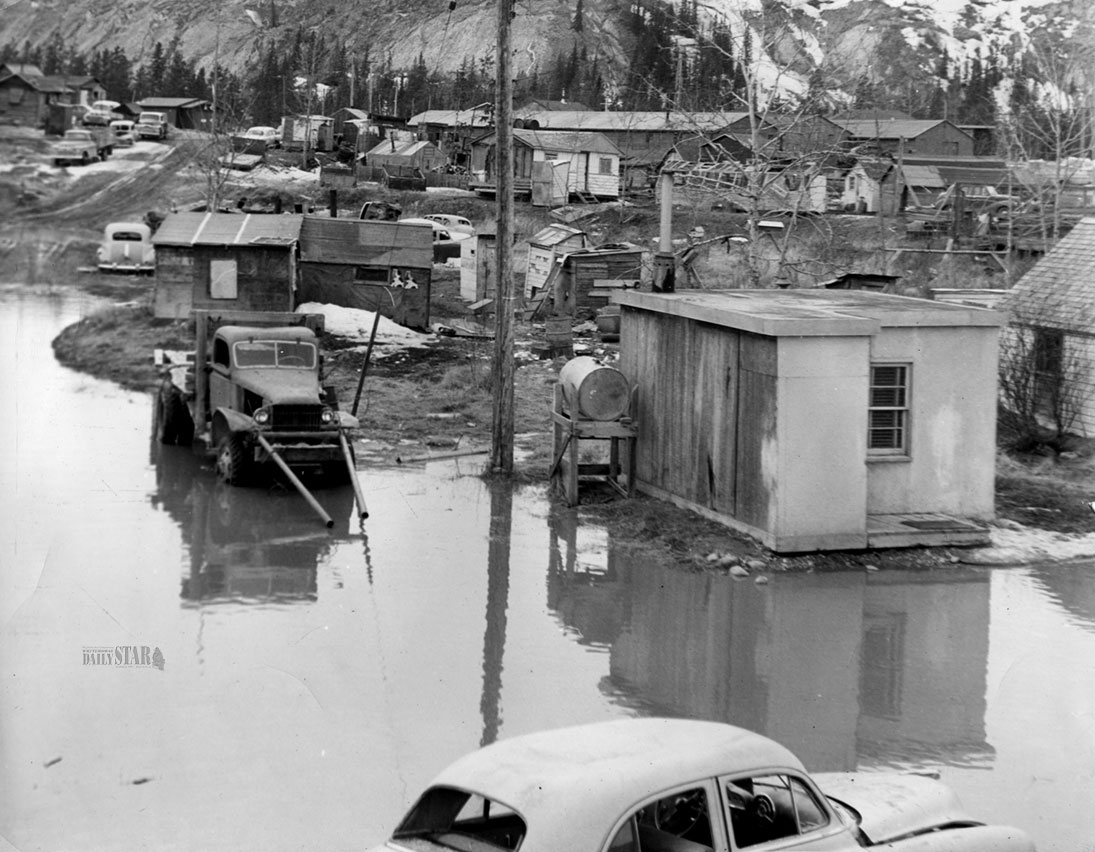
Photo by Whitehorse Star
Then. Whiskey Flats was old cars and old shacks surrounded by junk. Whitehorse Star file photo

Photo by Whitehorse Star
Then. Whiskey Flats was old cars and old shacks surrounded by junk. Whitehorse Star file photo
"Squatters to go next week!"
Lest anyone should bristle and get ready to do battle, let it be pointed out that the headline appeared in the early 1950's and it referred to Whiskey Flats, now known by the less colourful title of Rotary Park. But even with the announcement in headlines it was still ten years before Whisky Flats was cleaned up.
The flats, a legacy of the wartime boom years, was a conglomeration of bits and pieces of old American army buildings, tar paper shacks and log structures with oil drums and wrecked cars drawn around them like a wagon train waiting for Indian raiders. Situated along the river bank, there were actually three "flats" – used largely by transients who hauled their slops out to the river and their water back. Whiskey Flats in the south end of town, Sleepy Hollow in the north and Moccasin Flats in the middle.
There was minor crime and the odd murder but on the whole Whisky Flats, outside of the boozing, was a fairly quiet place and it had a number of solid citizens who claimed they couldn't find anywhere else to live. They paid no taxes and they were on White Pass or crown property.
Whitehorse city fathers tried for years to coax the squatters to leave. They made deals with the territorial and federal governments for land in the outskirts of town for squatters to move to. But no sooner would one squatter move out than another would move in. This process of moving squatters did start the out of town developments of Porter Creek and other "ribbon development" areas to bloom, but Whiskey Flats continued.
Then came the building of the first Robert Campbell bridge and the opening of the sub–division of Riverdale. All those 9 to 5 commuters driving to and from downtown Whitehorse didn't like the view from the bridge, so the pressure was on. But it wasn't until 1964 that the big cleanup took place. That year, the Chamber of Commerce headed by businessman Erik Wieneke, along with companies and private citizens, volunteered their labour and equipment and day after day hauled thousands of tons of junk and buildings away.
The way they did it was simple. After an extensive advertising campaign saying they would not force anyone out of a residence, the committee took printed "occupied" signs and gave them to bona fide residents. After several weeks the shacks with no signs tacked on the outside were demolished or moved. Thus non resident "owners" or drifters were out of luck. There were a few screams of rage but it worked. As the unowned shacks were disposed of the real shack owners were encouraged to move. In the end it was attrition which ended Whiskey Flats.
Then the stern wheeler Klondike was moved through the streets of Whitehorse to become an historic site in the former Flats area, and the Rotarians built the present children's park.
Thus a bit of Yukon history was carted away to the dump, to be replaced by better things. There are some wags, of course, who wonder whether the government will ever rebuild Whiskey Flats the way it was, as an historic site. It's not impossible and just think how great those names would look in the travel brochures; Sleepy Hollow, Moccasin Flats, Whiskey Flats – Oh! the magic of it all, the mystery…
Article copied from The Whitehorse Star 90th Anniversary edition
In order to encourage thoughtful and responsible discussion, website comments will not be visible until a moderator approves them. Please add comments judiciously and refrain from maligning any individual or institution. Read about our user comment and privacy policies.
Your name and email address are required before your comment is posted. Otherwise, your comment will not be posted.
Comments (1)
Up 2 Down 1
Elzabeth Olson on Apr 26, 2020 at 10:20 pm
My family lived there when I was born in 1961.